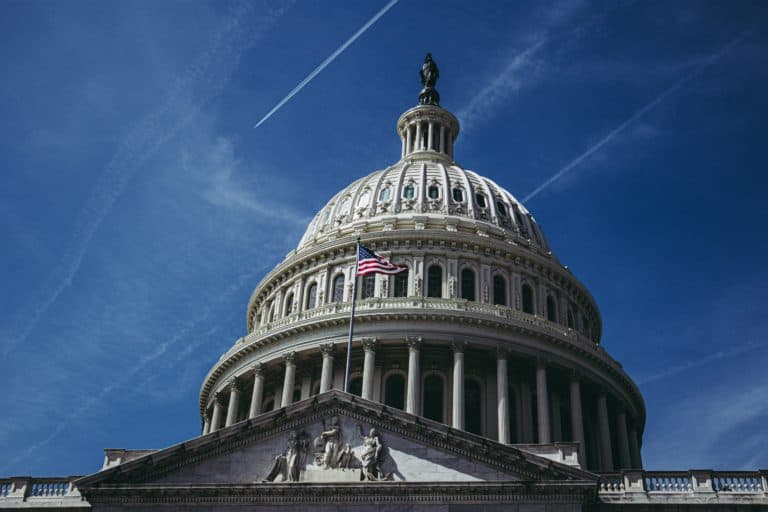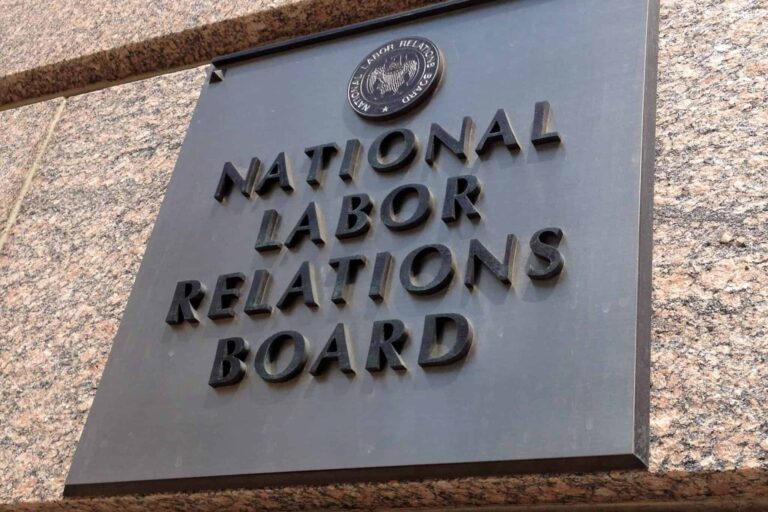
Darin M. Dalmat is a Senior Partner at Barnard, Iglitzin, & Lavitt LLP—a law firm in Seattle, Washington, that represents unions.
Sketches of Judicial Review of NLRB Orders Post-Chevron
We can now return to Chevron’s challengers. While not always clear on the regime that should replace Chevron, the challengers urge the Court at least to “clarify that statutory silence does not trigger Chevron.” Pet. Br. 2. They thus apparently wish to scrap the presumption that statutory silence, coupled with general rulemaking authority, delegates interpretive authority to agencies. City of Arlington v. FCC, 569 U.S. 290, 296 (2013). Absent such a presumption, courts would have to undertake a statute-and-agency specific analysis to determine whether and when to accord agencies deference.
That task is particularly straightforward for the NLRA and Board: extensive precedent—before and after Chevron—reads the Act as requiring deference to Board interpretations. Part II. And the challengers’ specific statutory and constitutional attacks don’t move the ball when it comes to the NRLA.
Begin with the APA. The challengers argue the APA requires de novo review by requiring review courts to “decide all relevant questions of law … .” 5 U.S.C. § 706; Pet. Br. 28–29.
But Section 706 says nothing about the standard of review courts should apply when reviewing agency interpretations. Kisor v. Wilkie, 139 S. Ct. 2400, 2419 (2019) (plurality opinion). The text of Section 706 is just as consistent with de novo review as with deferential review. Id.
More fundamentally from the NLRA’s perspective, Section 706 isn’t the APA’s only word on judicial review. Section 701 provides that the APA’s judicial review provisions do not apply “to the extent that agency action is committed to agency discretion by law.” 5 U.S.C. § 701(a)(2).
Here, Congress mandated the Board to recognize when ULPs have occurred and then to order remedies that effectuate the policies of the Act. 29 U.S.C. § 160(c). Numerous cases—from Pennsylvania Greyhound to Allentown Mack—read this provision as committing interpretive and remedial discretion by law to the Board. Part II.
That’s because Congress chose the Board, specifically, to apply the Act to particular cases. Erie Resistor, 373 U.S. at 236 (Congress “placed in [the Board’s] hands” the obligation to recognize and prevent ULPs in particular cases). “Those who apply [a legal] rule to particular cases, must of necessity expound and interpret that rule.” Marbury v. Madison, 5 U.S. 137, 177 (1803). Congress thus placed in the Board’s hands the obligation, in the first instance, to interpret the NLRA. MEBA v. Interlake S.S., 370 U.S. 173, 185 (1962) (“While the Board’s decision is not the last word [on the NLRA], it must assuredly be the first.”).
And Congress gave the Board that job while enacting substantive terms that speak with broad, “general prohibitory language” that applies to “infinite combinations of events which might be charged as violative of its terms.” Republic Aviation, 324 U.S. at 798. Doing so necessarily endowed the Board with broad discretion to say when ULPs occur. Arlington, 569 U.S. at 296. That interpretive discretion is as much a part of Congress’s design as the substantive rights established in section 7 and the substantive wrongs proscribed in section 8.
So, too, with remedies. Congress charged the Board with the duty, upon finding a ULP, “to take such affirmative action … as will effectuate the [Act’s] policies … .” 29 U.S.C. § 160(c). Congress specified those policies in express, but capacious, terms: “encouraging the practice and procedure of collective bargaining” and “protecting the exercise by workers for full freedom of association … for the purpose of negotiating the terms and conditions of their employment or other mutual aid or protection.” 29 U.S.C. § 151. By expressly commanding the Board to issue remedial orders that effectuate those broad policies, Congress necessarily charged the Board with the responsibility to determine which remedies best further the United States’s express labor policies.
Ultimately, Congress gave the Board discretion both in interpreting the NLRA and in formulating remedies. That discretion, committed by law to the Board, forecloses judicial review under the APA. The NLRA itself provides for judicial review and the deferential standards that have governed such review since 1938 should remain even if Chevron falls.
Now consider the constitutional attack. The challengers contend the Constitution gives the judiciary, alone, the power to say what the law is and, by requiring courts instead to defer to executive agencies’ interpretations of ambiguous statutes, Chevron cannot be squared with that judicial duty. Pet. Br. 24–25.
That theory seems trained principally on statutes that create programs and authorize the implementing agency to make rules necessary to carry them out. Whatever may be said of the challenge in that context, it has little to do with the NLRA. Yes, Congress authorized the Board to make rules. 29 U.S.C. § 156. But the Board, “uniquely among major federal administrative agencies, has chosen to promulgate virtually all the legal rules in its field through adjudication rather than rulemaking.” Allentown Mack, 522 U.S. at 374. That’s not simply because the Board likes adjudication. As we’ve seen, Congress requires the Board to adjudicate ULP cases.
In labor law, then, the separation of powers question isn’t whether deferential review strips federal courts of Article III authority to say what the law is. It’s whether Article I gives Congress sufficient authority to create executive agencies and require them to adjudicate certain issues, with interpretive and remedial discretion, and, if so, whether the Constitution compels the judiciary to respect that statutory design and the fruits of the ensuing adjudications.
Chief Justice Roberts put the point well:
We do not ignore [Marbury’s] command when we afford an agency’s statutory interpretation … deference; we respect it. We give binding deference to permissible agency interpretations of statutory ambiguities because Congress has delegated to the agency the authority to interpret those ambiguities with the force of law.
569 U.S. 290 at 317 (Roberts, C.J., dissenting) (cleaned up).
The various limits of deference discussed in Part III certainly give federal courts plenty of work to do in reviewing Board orders. Demands for de novo review of Board orders, however, trench on Congress’s statutory design and would dilute Executive action taken at Congress’s express authorization—circumstances that ordinarily would warrant the greatest judicial humility. Youngstown Sheet & Tube Co. v. Sawyer, 343 U.S. 579, 635 (1952) (Jackson, J, concurring). All the more so where, as here, Congress expressly indicated that the Board’s powers to prevent ULPs shall be unaffected by other legal processes. 29 U.S.C. § 160(a).
Congress wrote the NLRA in express terms that give the Board interpretive and remedial discretion, and it limited other legal means—including judicial review—to circumscribe that discretion. The Court has read those terms, time and again, to require judicial deference to the Board’s reasonable, constitutional interpretations within its sphere. The Court’s fealty in discharging that duty to defer has often varied, even as the Court has consistently announced the duty. And, for too long, courts have diluted the Act in the name of independent judicial review and their own atextual vision of labor policy. With or without Chevron, adherence to the Act’s express terms and respect for Congress’s statutory design demands greater judicial humility when reviewing Board orders.
The views and opinions expressed in this article are those of the author and do not necessarily reflect the views or positions of any entities that the author represents.










Daily News & Commentary
Start your day with our roundup of the latest labor developments. See all
July 6
Municipal workers in Philadelphia continue to strike; Zohran Mamdani collects union endorsements; UFCW grocery workers in California and Colorado reach tentative agreements.
July 4
The DOL scraps a Biden-era proposed rule to end subminimum wages for disabled workers; millions will lose access to Medicaid and SNAP due to new proof of work requirements; and states step up in the noncompete policy space.
July 3
California compromises with unions on housing; 11th Circuit rules against transgender teacher; Harvard removes hundreds from grad student union.
July 2
Block, Nanda, and Nayak argue that the NLRA is under attack, harming democracy; the EEOC files a motion to dismiss a lawsuit brought by former EEOC Commissioner Jocelyn Samuels; and SEIU Local 1000 strikes an agreement with the State of California to delay the state's return-to-office executive order for state workers.
July 1
In today’s news and commentary, the Department of Labor proposes to roll back minimum wage and overtime protections for home care workers, a federal judge dismissed a lawsuit by public defenders over a union’s Gaza statements, and Philadelphia’s largest municipal union is on strike for first time in nearly 40 years. On Monday, the U.S. […]
June 30
Antidiscrimination scholars question McDonnell Douglas, George Washington University Hospital bargained in bad faith, and NY regulators defend LPA dispensary law.